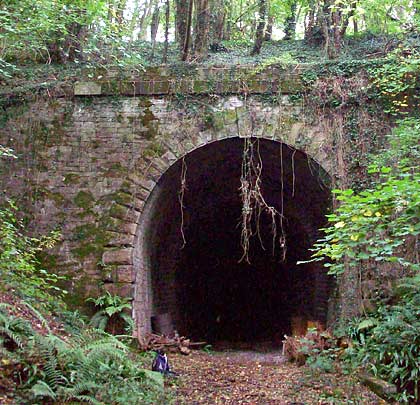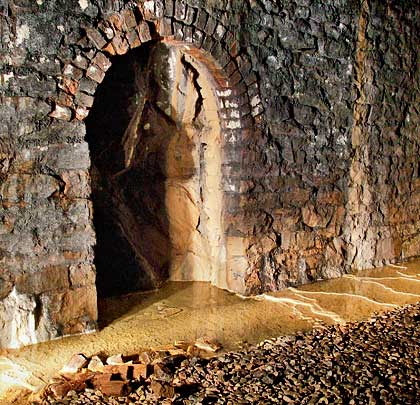Lea Tunnel
Lea Tunnel












Authorised by an Act of Parliament in 1851, the Hereford Ross & Gloucester Railway was opened from Grange Court Junction to a temporary terminus at Hopeswood on 11th July 1853. Slow progress building the 771-yard Lea Tunnel delayed completion of the through route until 1st June 1855. Built for broad gauge, the single track bore was the most significant structure on the section to Ross; it also marked its highest point. It occasionally masquerades under the pseudonyms of Lea Line, Boxbush or Mitcheldean.
Functional masonry portals lead to a bore that is straight, fully-lined in stone and on a falling gradient of 1:144 to the east. There are no ventilation shafts but regular refuges are provided on both sides, some with exposed rock at their rear. Catchpits down the centreline provide access to a drain. Immediately inside the east end is a five-course brick insert, presumably added for strengthening. A second and neater section of reinforcement is found towards the middle, this time in tougher engineering brick.
August 1869 saw the line’s conversion to standard gauge, a job that took just five days. But decline came swiftly with the motor car’s arrival. Passenger services were withdrawn on 2nd November 1964 with freight continuing for another year.
Today the tunnel is bricked-up at its western end although holes have been created for bats. The eastern entrance remains open. The drain no longer functions particularly well. As a result, although the tunnel is mostly dry, water ingress can, in places, result in streams running at the foot of either wall.







